Nepal, a country renowned for its majestic Himalayas and rich cultural heritage, offers an equally mesmerizing culinary journey, particularly in the realm of desserts. This hidden gem of South Asian cuisine boasts a variety of traditional sweets that are deeply rooted in its diverse cultural fabric. From the festive Yomari dumplings to the creamy Juju Dhau, each dessert tells a story of regional flavors and age-old traditions. In this blog, we embark on an exploration of Nepal's Dessert Delights, delving into the sweet and savory world of Nepali treats that are as enchanting as the country's landscapes and as diverse as its people. Join us on this journey into sweetness, where every bite is a taste of Nepal's rich culinary and cultural heritage.
At Kathmandu Cooking Academy, we are delighted to be recognized as a top choice for Exploring Nepal's Dessert Delights: A Journey into Sweetness. Located in the bustling heart of Nepal's capital, our academy offers a unique and engaging experience for those passionate about culinary arts and eager to delve into the world of traditional Nepali sweets. Our expert-led cooking classes not only allow you to taste the exquisite flavors of iconic desserts like Yomari and Juju Dhau but also teach you how to craft them. Whether you're an experienced chef or a culinary beginner, Kathmandu Cooking Academy is the perfect place to uncover the secrets and stories behind Nepal’s most cherished sweets. Embark on a memorable culinary journey with us, where each lesson is a blend of fun, flavor, and authentic Nepali hospitality.
Yomari: A Newari Delicacy
Yomari is a distinctive and cherished delicacy in the Newari culture of Nepal, particularly in the Kathmandu Valley. This traditional sweet holds not just culinary importance but also significant cultural and historical value.
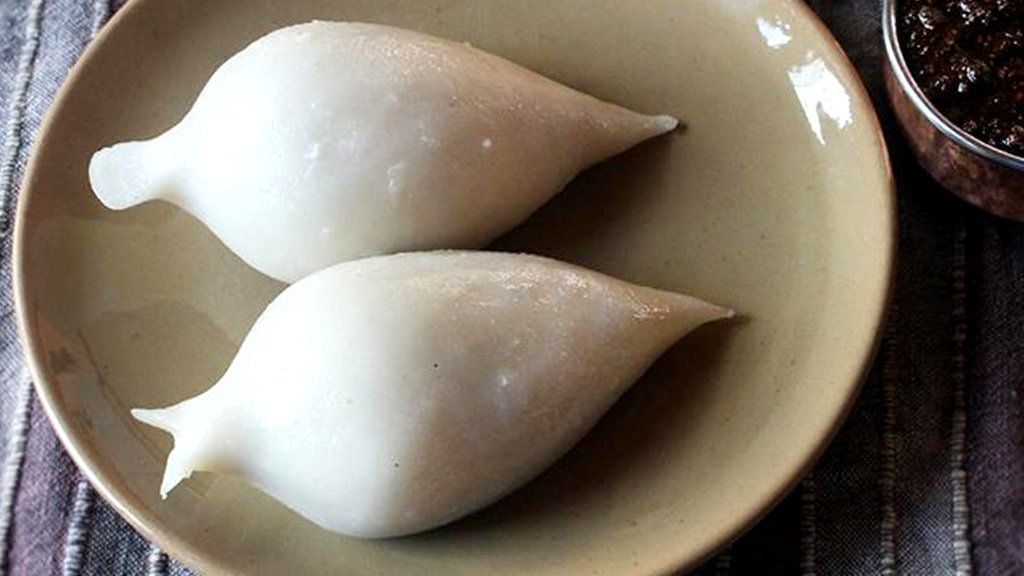
Origins and Cultural Significance: Yomari, which translates to 'tasty bread' in the Newari language, has its origins deeply rooted in the Newar community. It is traditionally prepared during the Yomari Punhi festival, which is celebrated on the full moon day of December. This festival, marking the end of the rice harvest, involves the preparation and sharing of Yomari as a symbol of prosperity and gratitude.
Unique Shape and Preparation: The most striking feature of Yomari is its unique shape, resembling a fig or a fish, which is symbolic in Newari culture. It's made from rice flour dough, which is shaped into a conical figure and filled with a sweet mixture of chaku (molasses) and sesame seeds. The preparation of Yomari is considered an art, requiring skill and patience, particularly in crafting its delicate shape.
Cooking and Serving: Yomari is steamed until the outer rice flour shell becomes tender and the inner filling goesoey and sweet. It's typically served warm, making it a comforting treat during the cold December months in Nepal.
Modern Variations: While the traditional filling of Yomari is chaku and sesame seeds, modern variations have emerged, including fillings like coconut, chocolate, and even khuwa (a thickened milk product). These new versions cater to diverse palates while maintaining the essence of the traditional delicacy.
Symbolic Importance: Beyond its delicious taste, Yomari is imbued with symbolism. It's believed to be an offering to the gods and a way to ensure a good harvest in the coming year. The delicacy is also shared among family and friends as a gesture of goodwill and affection.
Yomari is not just a dessert; it's a cultural icon that embodies the richness of Newari tradition, the joy of communal celebration, and the deep-rooted connection of the people with their land and heritage. Experiencing Yomari is to experience a piece of Nepal's soul.
Juju Dhau: The King of Yogurts
Juju Dhau, often hailed as the "King of Yogurts," is a culinary gem from the ancient city of Bhaktapur in Nepal. This traditional yogurt stands out not just for its taste but also for its cultural significance and unique preparation method.
.jpg)
Origin and Cultural Significance: Juju Dhau, which literally translates to "King Yogurt" in the Newari language, is deeply rooted in the history and traditions of Bhaktapur. It's an integral part of various festivals, ceremonies, and daily life in this culturally rich city. The yogurt is often used in religious offerings and is a must-have during major Nepali festivals like Dashain and Tihar.
Distinctive Preparation: The uniqueness of Juju Dhau lies in its traditional preparation method. It starts with buffalo milk, which is boiled and then cooled to a lukewarm temperature. To this, a starter culture is added. The mixture is then poured into clay pots known as 'matkas,' which are believed to impart a distinct earthy flavor and texture to the yogurt.
Fermentation Process: These clay pots are then sealed and placed in a warm area to allow the yogurt to ferment. The fermentation process, which takes several hours, is crucial in achieving Juju Dhau’s thick, creamy consistency and its mildly sweet, tangy flavor.
Serving and Consumption: Juju Dhau is traditionally served chilled and often enjoyed as a dessert. Its rich, velvety texture and natural sweetness make it a popular treat among locals and tourists alike. It can be eaten plain or accompanied by fruits and nuts for added flavor.
Cultural and Nutritional Value: Apart from its delightful taste, Juju Dhau is also appreciated for its nutritional value. Being rich in probiotics, it is beneficial for digestion and overall health. Culturally, it's a symbol of Bhaktapur's heritage and a testament to the city's age-old culinary practices.
Juju Dhau is more than just a yogurt; it's an experience of Bhaktapur's traditional flavors, an emblem of Nepali culinary art, and a must-try for anyone seeking to indulge in the authentic taste of Nepal.
Sikarni: A Yogurt Lover’s Dream
Sikarni, a traditional Nepali dessert, is a dream come true for yogurt lovers. This sweet treat, originating from the diverse culinary landscape of Nepal, is a testament to the simple yet rich flavors that Nepalese cuisine offers.
Origin and Cultural Background: Sikarni is deeply rooted in Nepali culinary traditions. While its exact origin is hard to pinpoint, it is widely enjoyed across the country, particularly during festivals and special occasions. This dessert is a celebration of the natural produce of Nepal, showcasing how simple ingredients can create a delightful dish.
Preparation and Ingredients: The primary ingredient of Sikarni is yogurt, which is strained to remove excess water, resulting in a thick and creamy consistency. To this, powdered sugar is added along with a blend of aromatic spices like cardamom and sometimes a hint of saffron for its unique flavor and color. The mixture is then thoroughly combined to ensure a smooth, rich texture.
Flavor and Garnishing: Sikarni is known for its sweet and tangy flavor profile, with the cardamom adding a delightful fragrance and depth. It's often garnished with chopped nuts like pistachios, almonds, or cashews, which add a crunchy contrast to the creamy base. Sometimes, dried fruits or fresh fruit slices are also added as a topping, making it not only delicious but also visually appealing.
Serving and Enjoyment: This dessert is typically served chilled, making it a refreshing treat, especially in the warmer months. Sikarni can be a perfect end to a meal or a standalone snack to savor the rich yet refreshing flavors of Nepali cuisine.
Nutritional Value: Aside from its taste, Sikarni is also appreciated for its nutritional benefits. The yogurt base makes it rich in probiotics, beneficial for digestion and gut health, while the nuts add a good source of healthy fats and protein.
Cultural Significance: In Nepali culture, Sikarni is often associated with hospitality and celebration. Serving this dessert to guests is a sign of respect and affection, making it a staple in Nepali festive meals.
Sikarni, with its delightful blend of flavors and textures, is more than just a dessert; it's a celebration of Nepali heritage and culinary craftsmanship. It invites both locals and visitors alike to experience the subtlety and richness of Nepal’s culinary delights.
Sel Roti: A Sweet Nepali Doughnut
Sel Roti: This traditional Nepali sweet is often likened to a doughnut but with its own unique twist and cultural significance. A staple in Nepali festivals and celebrations, Sel Roti seamlessly blends the aspects of a bread and a doughnut, offering a taste that is both familiar and distinctively Nepali.
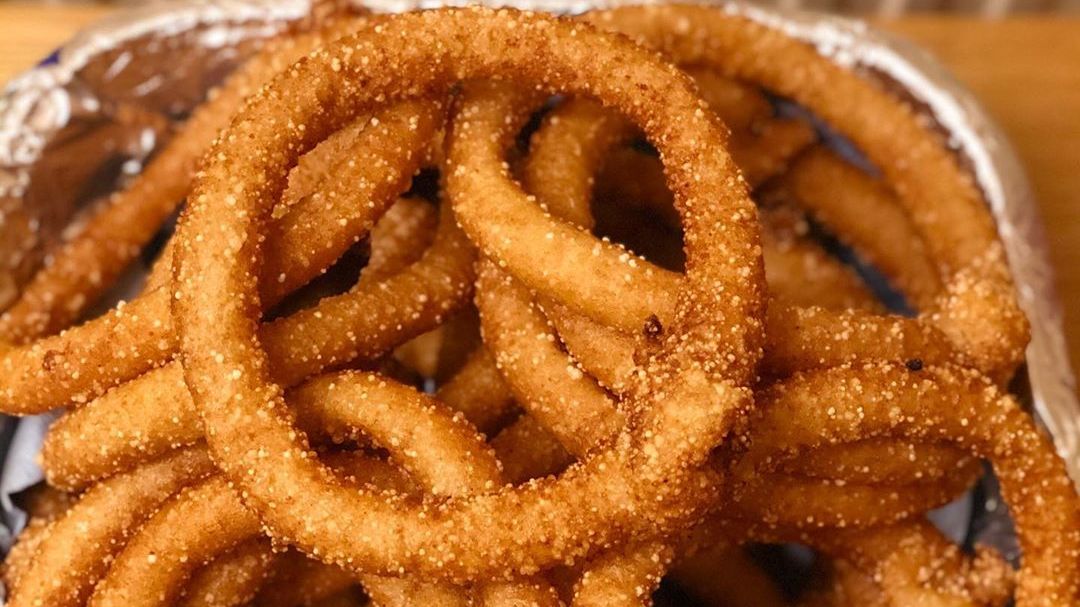
Cultural Importance and Occasions: Sel Roti is especially popular during major Nepali festivals like Dashain and Tihar. It's a symbol of festivity and goodwill, often made in Nepali households as a special treat to share with family and friends. The making of Sel Roti during these festivals is not just a culinary activity but a cherished tradition, bringing families together in the spirit of celebration.
Ingredients and Preparation: The main ingredient of Sel Roti is rice flour, which is mixed with sugar, water, and sometimes a little bit of milk to create a batter. Key flavorings like cardamom and sometimes cloves are added to enhance its taste. The batter is then deep-fried in a ring shape until it achieves a golden-brown color. The cooking process requires a certain level of skill and practice, as the batter is typically poured into hot oil by hand, forming the distinctive circular shape of Sel Roti.
Texture and Flavor: The end result is a sweet, crispy outer layer with a soft, bread-like inside. Its texture is a delightful contrast - crunchy on the outside and soft on the inside. The sweetness is usually mild, with the aromatic flavors of cardamom coming through.
Versatility and Pairing: Sel Roti is versatile and can be enjoyed on its own or paired with other Nepali dishes like yogurt or vegetable and meat curries. It can be a part of breakfast, a snack, or a dessert, showcasing its adaptability in various meal settings.
Homemade Tradition: In Nepal, Sel Roti is predominantly a homemade delicacy, prepared with love and care. The process of making Sel Roti is often a family affair, with knowledge and techniques passed down through generations.
Sel Roti, with its delicious taste and cultural significance, is more than just a Nepali version of a doughnut. It is a representation of Nepal's rich culinary heritage and a must-try for anyone looking to experience the authentic flavors of Nepali cuisine.
Lal Mohan: Nepal's Take on Gulab Jamun
Lal Mohan, often regarded as Nepal's version of the popular Indian dessert Gulab Jamun, is a beloved sweet treat in Nepali cuisine. This delightful dessert has made its way into the hearts of Nepali people, symbolizing the shared culinary influences between Nepal and its southern neighbor, India.
.jpg)
Cultural Influence and Adaptation: Lal Mohan demonstrates the cultural and culinary exchanges that have occurred over centuries between Nepal and India. While it shares similarities with Gulab Jamun, Lal Mohan has its own unique Nepali twist, both in preparation and taste, making it a distinct part of Nepali festive feasts and celebrations.
Ingredients and Preparation: The base of Lal Mohan is made from khoya (milk solids) or milk powder, mixed with flour and a leavening agent to create a dough. This dough is then shaped into small, smooth balls, which are deep-fried until they attain a golden-brown color. The key to perfect Lal Mohan is ensuring these balls are spongy and light, able to soak up the sweet syrup they are immersed in after frying.
Syrup and Flavoring: Once fried, the Lal Mohans are soaked in a warm, sweet syrup, typically flavored with cardamom and sometimes rose water or saffron. This soaking process is crucial, as it allows the fried balls to absorb the syrup, becoming delightfully sweet and juicy.
Serving and Enjoyment: Lal Mohan is usually served at room temperature or slightly warmed, often garnished with thinly sliced almonds or pistachios for an added crunch and visual appeal. It's a common sight in Nepali weddings, festivals, and special occasions, relished by people of all ages.
Culinary Delight: This dessert is not just a treat for the taste buds but also a reflection of Nepal's rich culinary diversity and its ability to adapt and embrace influences from neighboring cultures. Lal Mohan's popularity in Nepal is a testament to its delightful taste and the shared heritage with Indian cuisine.
Lal Mohan in Nepali Cuisine: In Nepal, Lal Mohan holds a special place in the array of sweets offered during celebrations. It embodies the warmth and hospitality of Nepali culture, often served to guests as a gesture of welcome and celebration.
Lal Mohan, with its soft, spongy texture and sweet, aromatic syrup, is more than just Nepal’s take on Gulab Jamun. It’s a culinary emblem of shared history and cultural assimilation, offering a glimpse into the rich tapestry of flavors that Nepali cuisine has to offer.
Pustakari: A Traditional Nepali Toffee
Pustakari is a traditional Nepali toffee-like confection, a classic example of Nepal’s rich and diverse sweet-making tradition. This delightful treat is deeply ingrained in the culinary heritage of Nepal, particularly popular in the Terai region.

Origins and Cultural Significance: Pustakari, with its rustic charm, is a reflection of Nepal's simpler, rural culinary practices. It is not just a sweet but a piece of Nepali tradition, often made in homes during festivals and special occasions. The process of making Pustakari is seen as a way to bring families together, sharing in the joy of cooking and celebration.
Ingredients and Preparation: The main ingredient in Pustakari is jaggery, a traditional unrefined sugar made from sugarcane juice. This gives Pustakari its distinct sweetness and texture. The jaggery is combined with butter or ghee and sometimes mixed with coconut, sesame seeds, or nuts, adding depth and richness to the flavor.
Texture and Flavor: Pustakari has a unique texture that sets it apart from typical toffees. It’s hard yet chewy, with a melt-in-the-mouth quality. The combination of jaggery and butter creates a rich, caramel-like flavor, while the addition of coconut or sesame seeds adds a nutty, satisfying crunch.
Serving and Consumption: Pustakari is usually served as a standalone sweet treat. It’s often enjoyed as a snack or a quick sweet bite after meals. Its rich flavor and satisfying texture make it a favorite among both children and adults.
Traditional Significance: In many Nepali communities, Pustakari is more than just a confection; it’s a symbol of celebration and hospitality. Offering Pustakari to guests is a traditional way to welcome them into one’s home.
Modern Adaptations: While Pustakari remains true to its traditional roots, some modern variations include the addition of flavors like cardamom or ginger, appealing to a broader palate.
Pustakari is not just a testament to the diverse and rich flavors of Nepali cuisine, but also to the simplicity and joy inherent in its traditional cooking. This toffee-like sweet embodies the warmth and richness of Nepal's culinary heritage, offering a delightful taste experience to those who seek the authentic flavors of this Himalayan nation.
Anarsa: A Festive Favorite
Anarsa is a festive favorite in Nepali cuisine, a delightful sweet treat that's especially popular during celebrations and special occasions. This traditional confection symbolizes the joy and festivity inherent in Nepali culture, making it a cherished part of various celebrations.
Cultural and Festive Significance: Anarsa is not just a dessert but a cultural emblem, often prepared during major Nepali festivals like Dashain and Tihar. Its presence on these occasions is a testament to its popularity and the fondness with which it is regarded in Nepali households. The preparation of Anarsa during festivals is more than a culinary practice; it's a celebration of tradition and togetherness.
Ingredients and Preparation: The main ingredient in Anarsa is rice flour, which is usually mixed with jaggery or sugar, creating a dough. This dough is then shaped into small, flat discs and deep-fried in ghee or oil. The key to perfect Anarsa lies in its texture – a crispy exterior with a slightly chewy center.
Flavor Profile: Anarsa is known for its sweet and slightly nutty flavor, often enhanced with cardamom or fennel seeds. The jaggery or sugar in the dough caramelizes during frying, giving Anarsa its distinctive golden-brown color and rich taste.
Serving and Enjoyment: Typically served at room temperature, Anarsa is a versatile sweet that can be enjoyed as a snack or as part of a larger festive meal. Its unique texture and flavor make it a favorite among both adults and children.
Traditional Technique: The making of Anarsa is a traditional art, with techniques and recipes passed down through generations. The process of kneading the dough to the right consistency and frying it to perfection requires skill and practice, making it a prized recipe in many Nepali families.
Modern Variations: While Anarsa remains true to its traditional roots, contemporary versions may include innovative ingredients like coconut or chocolate chips, catering to modern tastes while preserving the essence of the traditional recipe.
Anarsa, with its delightful crunch and sweet flavor, is a reflection of Nepal's rich culinary heritage. It's a symbol of festivity, a treat that brings families together, and a beloved part of Nepal’s gastronomic legacy. Enjoying Anarsa is not just about savoring a sweet delicacy; it's about experiencing a piece of Nepali culture and tradition.
Khir (Rice Pudding)
Khir, commonly known as Rice Pudding, is a quintessential dessert in Nepali cuisine, cherished across the nation for its comforting simplicity and rich cultural significance. This sweet dish is a staple in many Nepalese celebrations and is deeply embedded in the culinary traditions of Nepal.
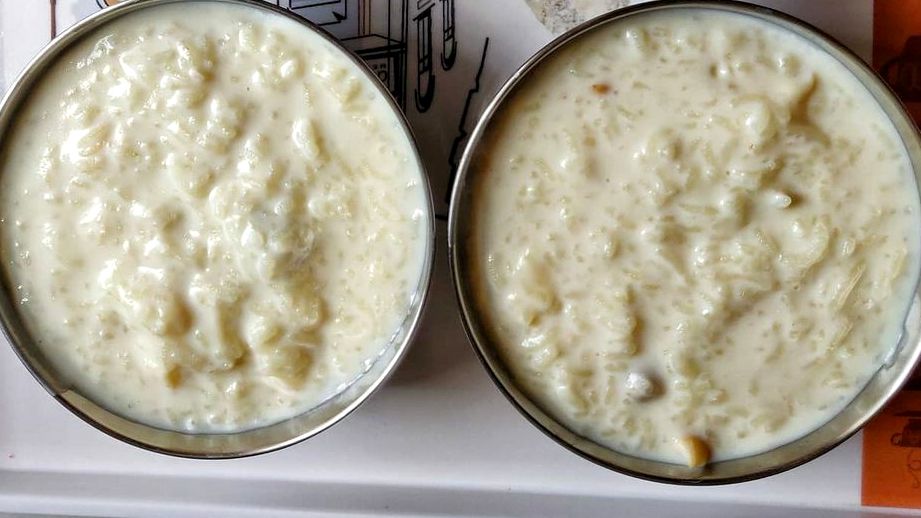
Cultural Resonance and Occasions: Khir holds a special place in Nepali culture. It's often served during important festivals, religious ceremonies, and auspicious occasions like weddings and family gatherings. In Nepal, Khir is not just a dessert but a symbol of good luck, prosperity, and happiness, making it an integral part of celebratory feasts.
Preparation and Ingredients: The primary ingredients of Khir are rice, milk, and sugar. The rice is slow-cooked in milk until it reaches a creamy consistency, absorbing the flavors and sweetness of the milk. Sugar is added for sweetness, and the dish is often flavored with cardamom, cinnamon, or saffron, adding a fragrant depth to the pudding.
Texture and Flavor: Khir is characterized by its creamy texture, which comes from the starch of the rice thickening the milk. The flavors are typically mild but rich, with the aromatic spices providing a subtle yet distinct taste.
Garnishing and Serving: Khir is usually garnished with nuts like almonds, cashews, or pistachios, and sometimes with raisins or dried fruits, adding a crunchy texture and contrasting flavors to the creamy pudding. It's typically served warm or chilled, depending on the season or personal preference.
Nutritional Value: Khir is not only delicious but also nutritious. It provides a good source of carbohydrates from the rice and protein from the milk, making it a wholesome and satisfying dessert.
Versatility in Recipes: While the basic recipe of Khir is simple, it's incredibly versatile. Different regions and families in Nepal have their own variations, sometimes adding coconut, mango, or banana, creating a wide array of flavors and styles.
In the landscape of Nepali desserts, Khir stands out for its simplicity, comforting warmth, and the deep cultural connections it embodies. It’s a dish that speaks of home, tradition, and the joy of shared meals, making it a beloved and timeless dessert in Nepali cuisine.
Gudpak
Gudpak is a luxurious and rich traditional Nepali dessert, known for its dense, creamy texture and indulgent taste. It's a classic example of Nepal's rich confectionery traditions and is particularly revered for its delightful combination of flavors and ingredients.
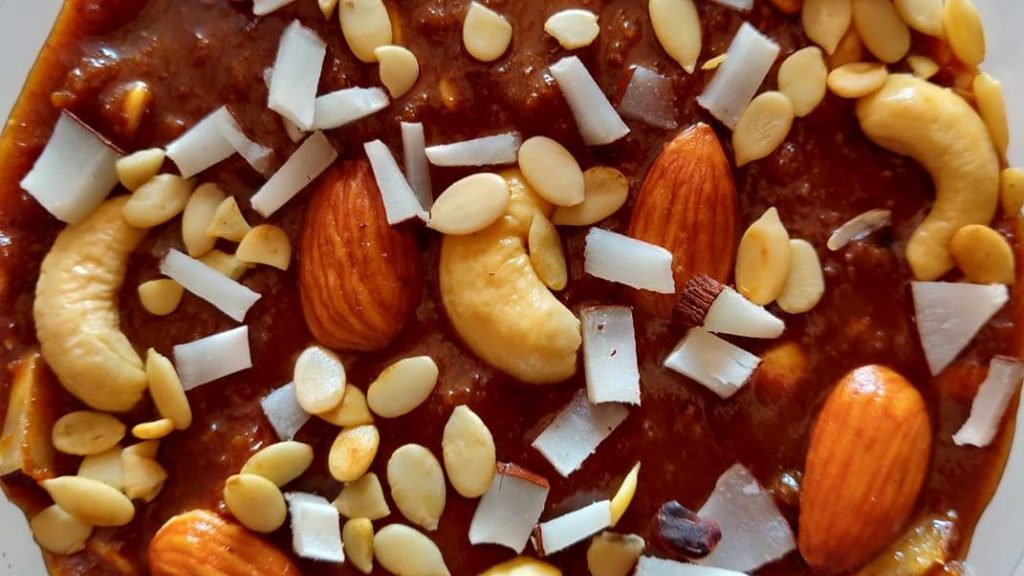
Cultural Significance and Occasions: Gudpak holds a special place in Nepali cuisine, especially during festivals, religious ceremonies, and important family events. It's often prepared during Tihar and Dashain, two of the most significant festivals in Nepal. Gudpak is not just a sweet treat; it's a symbol of celebration, indulgence, and the rich culinary heritage of Nepal.
Ingredients and Preparation: The primary ingredient in Gudpak is khoya or mawa, which is solidified milk reduced to a dense, creamy consistency. To this, a generous amount of ghee (clarified butter) is added, along with sugar for sweetness. The richness of Gudpak is further enhanced by a lavish use of dry fruits like cashews, almonds, and pistachios, and often, grated coconut is also included.
Flavor and Texture: Gudpak is distinguished by its intensely rich and creamy texture, which melts in the mouth. The flavor is a harmonious blend of the caramelized sweetness of the milk solids, the nutty taste of the dry fruits, and the aromatic infusion of cardamom, making it a decadently sweet experience.
Serving and Enjoyment: This dessert is typically served in small portions due to its richness. It can be enjoyed both warm and cold, depending on personal preference, making it a versatile dessert for various occasions.
Nutritional Value: While Gudpak is high in calories due to its rich ingredients, it also offers nutritional benefits such as protein from the milk solids and healthy fats from the nuts and ghee.
Traditional Significance: In Nepali households, the preparation of Gudpak is often a family activity, with recipes and techniques passed down through generations. It’s not just a culinary practice but a part of the cultural fabric, signifying love, generosity, and the joy of sharing.
Gudpak, with its sumptuous flavor and rich texture, epitomizes the essence of traditional Nepali desserts. It's a celebration of the sweetness of life, a treat that's deeply cherished in Nepali culture, and a must-try for anyone wishing to experience the authentic flavors of Nepal.
Halwa
Halwa is a popular and versatile dessert in Nepali cuisine, known for its delightful texture and sweet taste. This comforting dish often served during festivals and celebrations, is a testament to the simplicity and richness of traditional Nepali cooking.
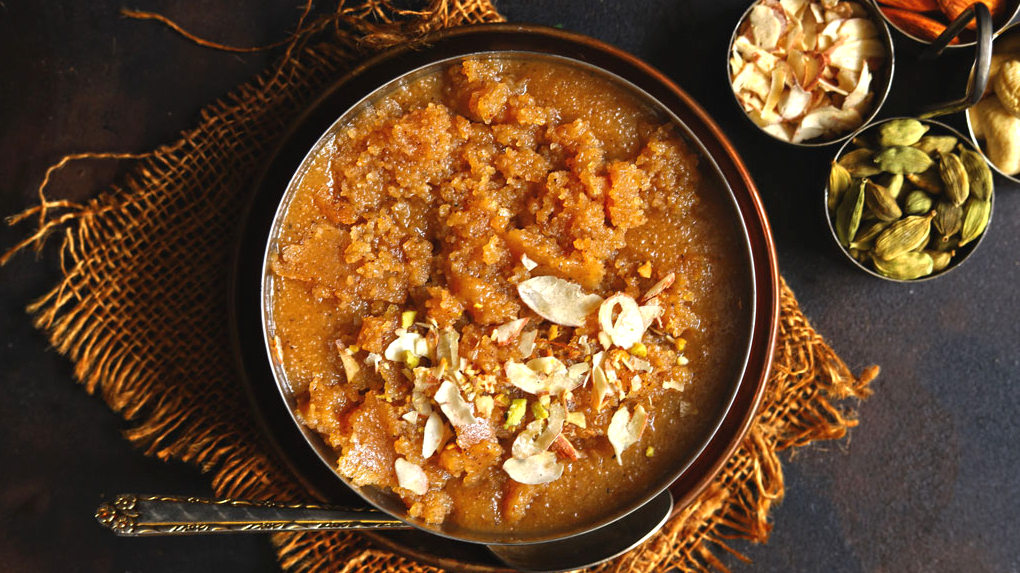
Variety and Ingredients: In Nepal, Halwa is made in various forms using different base ingredients. The most common types include Suji Halwa (made from semolina), Gajar Halwa (made from carrots), and Kaddu Halwa (made from bottle gourd). These base ingredients are slow-cooked with ghee (clarified butter), sugar, and milk, transforming into a dense, pudding-like dessert.
Flavor and Aromatics: The flavor of Halwa is typically sweet, often enhanced with aromatic spices like cardamom or cinnamon. Nuts such as almonds, cashews, and raisins are commonly added for texture and richness. In some recipes, coconut and dried fruits are also incorporated for added flavor and nutrition.
Cultural Significance: Halwa is more than just a sweet dish in Nepal; it holds cultural significance, being an integral part of religious ceremonies, festive celebrations, and family gatherings. Preparing and sharing Halwa is seen as a gesture of goodwill and festivity.
Serving and Enjoyment: Halwa is usually served warm, often as a dessert or a sweet accompaniment during meals. Its comforting warmth and rich texture make it particularly popular in colder months or as a festive treat.
Nutritional Value: While Halwa is rich in sugars and fats due to the use of ghee and sugar, it also provides nutritional benefits from its main ingredients like semolina, carrots, or bottle gourd, as well as the nuts and dried fruits added to it.
Halwa, with its sweet, comforting flavors and rich, dense texture, embodies the warmth and hospitality of Nepali culture. It's a dessert that brings people together, symbolizing joy and celebration and is a beloved part of Nepal’s culinary legacy.
The journey through Nepal's dessert delights offers a profound insight into the country's rich culinary heritage. Each dessert, from the hearty Chaku to the luxurious Gudpak, from the festive Yomari to the comforting Khir, tells a story of Nepal's diverse culture, traditions, and regional influences. These sweets are not just about satisfying the palate; they represent the essence of Nepali life - its festivals, its celebrations, and its everyday moments of joy. Exploring these desserts is to explore the heart and soul of Nepal, where each bite reveals a blend of history, tradition, and a deep sense of communal harmony. Whether you are a seasoned food enthusiast or a curious traveler, the sweet flavors of Nepal offer a unique and unforgettable culinary experience, bringing you closer to understanding the vibrant spirit of this beautiful Himalayan nation.
Kathmandu Cooking Academy offers an immersive culinary experience right in the heart of Nepal's vibrant capital. Our classes are designed for both cooking enthusiasts and curious travelers, providing an authentic hands-on experience in preparing traditional Nepali dishes. Led by expert chefs, these classes cover a range of recipes, from iconic Nepali entrees to delectable desserts like Yomari and Juju Dhau. In addition to cooking skills, our sessions also delve into the cultural significance and history behind each dish, making it a truly enriching experience. Whether you're looking to enhance your cooking repertoire or simply want to experience Nepal’s rich culinary traditions, Kathmandu Cooking Academy is the perfect place to start your gastronomic journey.

